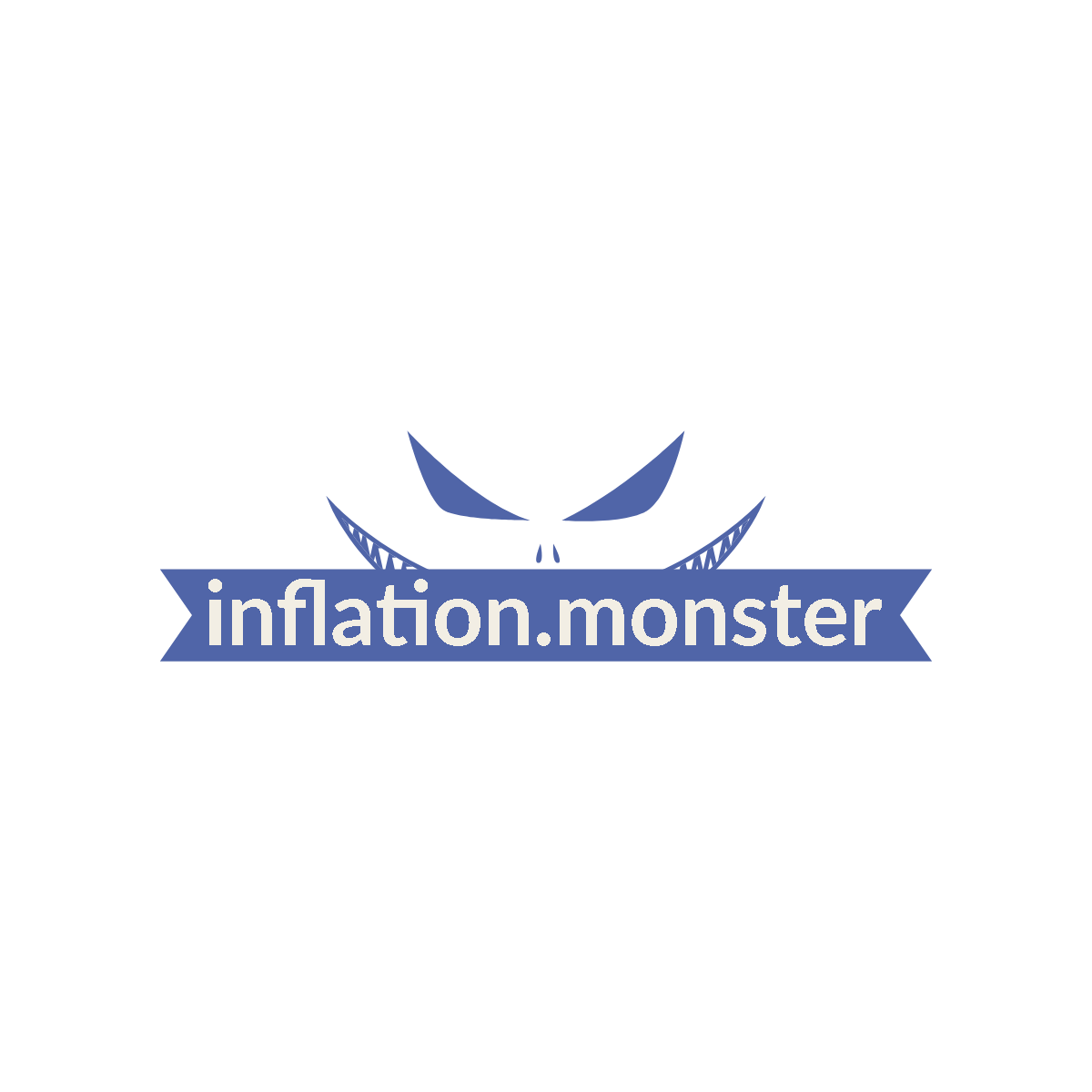In our quest to understand the enigmatic nature of inflation and its profound influence on the world of money and economics, we find ourselves compelled to explore the intricate relationship between inflation and labor market dynamics. As we embark on this journey together, we aim to shed light on the complex mechanisms at play, demystifying the inflation monster and empowering you with valuable insights to navigate the ever-evolving financial landscape. Join us as we delve into the depths of hard money, unravel the mysteries of inflation, and unravel the indispensable role of labor market dynamics.

The Concept of Inflation
Definition of inflation
Inflation is a measure of the rate at which the general level of prices for goods and services is rising, and, subsequently, the purchasing power of currency is falling. Put simply, inflation means that the average price of goods and services is increasing over time. This can have several implications for individuals, businesses, and the overall economy.
Causes of inflation
There are various factors that can contribute to inflation. One major cause is the increase in the money supply in an economy. When there is an excessive amount of money circulating, it can lead to an increase in demand for goods and services, causing prices to rise. Other causes include cost-push inflation, where input costs such as wages or raw materials increase, and demand-pull inflation, where demand for goods and services outpaces supply.
Types of inflation
Inflation can be categorized into different types based on the underlying factors driving it. For instance, demand-pull inflation occurs when aggregate demand exceeds the available supply, leading to an increase in prices. Cost-push inflation, on the other hand, results from an increase in production costs. Inflation can also be categorized as creeping (low and stable), galloping (high and accelerating), or hyperinflation (extremely high and out of control).
Understanding Labor Market Dynamics
Definition of labor market dynamics
Labor market dynamics refer to the various forces and interactions that shape the supply and demand of labor within an economy. It encompasses factors such as unemployment rates, job vacancies, wage levels, and the overall labor force participation. Understanding labor market dynamics is essential for policymakers, businesses, and individuals in making informed decisions regarding employment and economic growth.
Factors influencing labor market dynamics
Several factors influence labor market dynamics. These include the overall state of the economy, technological advancements, government policies, demographic changes, and the education and skill levels of the workforce. Changes in any of these factors can affect labor supply and demand, job opportunities, wages, and overall labor market conditions.
Importance of labor market dynamics
Labor market dynamics play a crucial role in shaping the overall economic landscape. The state of the labor market influences consumer spending, business investment, and overall economic growth. Additionally, labor market dynamics can impact income inequality, social mobility, and the general well-being of individuals and families. By understanding and managing labor market dynamics effectively, policymakers can promote a healthy and thriving economy.
The Relationship Between Inflation and Labor Market Dynamics
Impact of labor market dynamics on inflation
Labor market dynamics can have a significant impact on inflation. For example, an tight labor market with low unemployment rates and high demand for workers can lead to wage increases as businesses compete for talent. This increase in wages can then translate into higher production costs for businesses, which may ultimately be passed on to consumers in the form of higher prices.
Effect of inflation on the labor market
Inflation can also have an impact on the labor market. When prices rise rapidly, it erodes the purchasing power of wages, essentially reducing the real income of workers. This can lead to demands for higher wages to maintain a certain standard of living. Additionally, higher inflation rates can contribute to uncertainty and instability in the economy, which can negatively affect business investment and job creation.
Cyclical relationship between inflation and labor market dynamics
Inflation and labor market dynamics often have a cyclical relationship. In periods of economic expansion and low unemployment, inflation tends to rise as demand for goods and services outpaces supply. As prices increase, workers may demand higher wages, which further fuels inflationary pressures. Conversely, during economic downturns, high levels of unemployment can lead to lower inflation as weak demand dampens price increases.
Inflation and Wage Growth
Role of wage growth in inflation
Wage growth is a critical component of inflation. When wages increase, it provides individuals with more purchasing power, which can fuel consumer spending and demand for goods and services. As demand rises, businesses may need to increase prices to maintain profitability, leading to inflation. Conversely, stagnant or declining wages can put downward pressure on prices, resulting in lower inflation or even deflation.
Factors influencing wage growth
Several factors can influence wage growth. These include productivity levels, labor market conditions, inflationary expectations, government policies, and the bargaining power of workers. Higher productivity levels often lead to higher wages as businesses can afford to pay more. Additionally, tight labor markets with low unemployment rates can create upward pressure on wages as employers compete for workers.
Link between wage growth and inflation
There is a complex link between wage growth and inflation. While wage growth can contribute to inflation, it can also be influenced by inflation. When prices rise, workers may demand higher wages to maintain their real income. On the other hand, higher inflation can erode the purchasing power of wages, leading to demands for wage increases. This cyclical relationship highlights the importance of managing inflation and wage growth effectively.

Unemployment and Inflation
Phillips curve and the tradeoff between unemployment and inflation
The Phillips curve is an economic concept that illustrates the inverse relationship between unemployment and inflation. According to this theory, when unemployment is low, inflation tends to be higher, and vice versa. The logic behind this relationship is that when the labor market is tight, with low levels of unemployment, workers have more bargaining power, leading to higher wage demands. These higher wages then translate into higher production costs and price increases.
Natural rate of unemployment
The natural rate of unemployment is the level of unemployment that exists when the economy is operating at full employment, with no cyclical unemployment. It represents the long-term equilibrium level of unemployment, where there is no tradeoff between unemployment and inflation. This rate is determined by structural factors such as demographics, labor market institutions, and skills mismatches.
Inflation expectations and unemployment
Inflation expectations can also influence unemployment rates. When individuals and businesses expect higher inflation, they may anticipate higher wage demands, leading to a wage-price spiral. This can create a self-fulfilling prophecy, where higher inflation expectations contribute to higher actual inflation rates. Conversely, if inflation expectations are low, workers may be more willing to accept stagnant or declining wages, which can help lower inflation.
Inflation and Productivity
Impact of productivity on inflation
Productivity levels can have an impact on inflation. Higher productivity allows businesses to produce more goods and services with the same amount of inputs, leading to lower production costs. This, in turn, can help keep prices stable or even reduce prices, resulting in lower inflation. Conversely, stagnant or declining productivity levels can put upward pressure on costs, which may lead to higher prices and inflation.
Factors influencing productivity
Several factors can influence productivity levels. These include technological advancements, education and training, infrastructure, access to capital and resources, and the overall efficiency of the production process. Investments in research and development, innovation, and human capital development can contribute to higher productivity levels, which can help mitigate inflationary pressures.
Productivity growth and inflation
Productivity growth and inflation are closely linked. When productivity levels increase, businesses can produce more goods and services without increasing costs significantly. This can result in stable or even declining prices, helping to keep inflation in check. On the other hand, stagnant or declining productivity growth can lead to higher production costs, which may be passed on to consumers in the form of higher prices and inflation.

Labor Market Policies and Inflation
Effects of labor market policies on inflation
Labor market policies implemented by governments can have implications for inflation. For example, policies that promote greater labor market flexibility, such as reducing barriers to hiring and firing, can lead to lower unemployment rates. However, these policies can also lead to greater income inequality and lower wage growth, which can impact consumer spending and inflation dynamics. Therefore, it is essential for policymakers to consider the tradeoffs and potential consequences of labor market policies on inflation.
Role of minimum wage in inflation
The minimum wage is another factor that can influence inflation. When the minimum wage increases, it can lead to higher labor costs for businesses. This increase in costs may be passed on to consumers in the form of higher prices for goods and services. However, the impact of minimum wage increases on overall inflation is often debated, as it depends on various factors such as the size of the increase, the proportion of workers affected, and the elasticity of demand for the goods or services produced.
Government intervention and inflation
Government intervention in the labor market can also have implications for inflation. For example, policies that stimulate demand through fiscal or monetary measures can lead to higher inflation if the increase in demand outpaces the available supply. On the other hand, government policies that focus on increasing productivity and promoting competition can help mitigate inflationary pressures by improving the efficiency and effectiveness of the labor market.
Globalization and Inflation
Effects of globalization on labor market dynamics
Globalization has had a significant impact on labor market dynamics. It has increased the mobility of labor, allowing individuals to seek job opportunities in different countries. This has led to increased competition for jobs, which can put downward pressure on wages in some industries and regions. However, globalization has also created opportunities for businesses to access larger markets and benefit from economies of scale, which can help lower production costs and prices.
Inflationary pressures from international trade
International trade can also contribute to inflationary pressures. When countries engage in trade, they can import goods and services at lower prices than they can produce domestically. However, if domestic industries cannot compete with imports, they may face job losses and reduced wages. Additionally, fluctuations in exchange rates can impact the cost of imported goods, which can affect inflation rates in the importing country.
Impact of exchange rates on inflation
Exchange rates play a crucial role in determining the prices of imported goods and, subsequently, inflation rates. When a country’s currency depreciates, it becomes more expensive to import goods, which can lead to higher prices and inflation. Conversely, when a country’s currency appreciates, it becomes cheaper to import goods, potentially lowering prices and inflation. Exchange rate fluctuations can significantly impact the competitiveness of businesses and influence inflation dynamics.
Inflation Expectations and Labor Market Dynamics
Role of inflation expectations in labor market dynamics
Inflation expectations can shape labor market dynamics. When individuals and businesses expect higher inflation, they may anticipate higher wage demands, leading to wage-price spirals. On the other hand, if inflation expectations are low, workers may be more willing to accept lower wage increases, which can help keep inflation in check. Therefore, managing inflation expectations is crucial for maintaining stability in the labor market.
Effect of expectations on wage bargaining
Expectations of inflation can influence wage bargaining between employers and employees. If workers anticipate higher inflation, they may negotiate for higher wage increases to protect their purchasing power. On the other hand, if workers expect low inflation, they may be more willing to accept lower wage increases or even wage freezes. These expectations and negotiations can have a direct impact on wage growth and, subsequently, inflation.
Inflation targeting and its impact on labor market dynamics
Many central banks around the world adopt inflation targeting as a monetary policy framework. Inflation targeting involves setting a specific inflation target and utilizing monetary instruments to control inflation rates. By communicating and managing inflation expectations effectively, central banks can influence wage bargaining and labor market dynamics. This, in turn, can contribute to achieving the inflation target and maintaining stability in the labor market.
Policy Implications and Recommendations
How policymakers can influence labor market dynamics to control inflation
Policymakers have several tools at their disposal to influence labor market dynamics and control inflation. These include implementing labor market reforms to increase flexibility and job creation, investing in education and skills development to enhance productivity, adopting monetary and fiscal policies that promote stability and growth, and ensuring efficient regulation and enforcement to prevent market distortions.
Importance of a balanced approach to labor market policies
Taking a balanced approach to labor market policies is essential to achieve both economic growth and low inflation. It requires considering the perspectives of both workers and businesses, addressing structural issues within the labor market, promoting social and economic inclusiveness, and striking a balance between labor market flexibility and income security. A balanced approach can help create a conducive environment for sustainable economic development.
Recommendations for managing inflation through labor market interventions
To effectively manage inflation through labor market interventions, policymakers can consider several recommendations. These include investing in education and skills development to enhance productivity, promoting job creation and entrepreneurship through targeted policies, encouraging investment in research and development to drive innovation and competitiveness, fostering social dialogue and collaboration between employers and workers, and ensuring effective regulation to prevent labor market distortions.
In conclusion, the relationship between inflation and labor market dynamics is complex and multifaceted. Understanding the causes and types of inflation, the impact of labor market dynamics on inflation, and the role of globalization, wage growth, unemployment, productivity, and labor market policies is crucial for policymakers, businesses, and individuals. By effectively managing these factors and striking a balance, it is possible to navigate the challenges and opportunities presented by inflation and labor market dynamics, promoting sustainable and inclusive economic growth.




